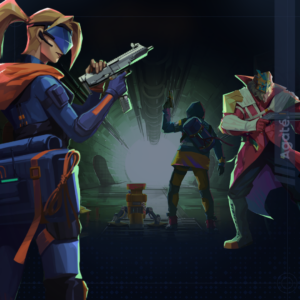If you are interested in 3D modeling and animation, there are plenty of 3D modeling software out there nowadays, and you might have heard of Blender and Maya. These are two of the most popular and powerful software tools for creating 3D models, characters, environments, and more. But which one is better for your needs? How do they compare in terms of features, cost, ease of use, and industry acceptance? In this article, we will look at the main differences between Blender and Maya in 3D modeling and help you decide which one to learn.
What are Blender and Maya?
Blender and Maya are both 3D modeling and animation software, but they have different features, costs, and user bases.
Blender is free and open source, which means anyone can download, use, modify, and distribute it without paying anything. It also has a large and active community of users and developers who contribute to its improvement and support. Blender uses Python 3 for customization and add-ons, which makes it flexible and extensible. Blender is easier for beginners to use and has better sculpting tools than Maya. Blender is also known for its fast and intuitive workflow, its versatile node-based system, and its integration with other open-source tools like GIMP and Inkscape.
Maya is a licensed product that requires a paid subscription to use. It is owned by Autodesk, a leading company in the field of design software. Maya has been a long-standing 3D program since 1998, and it has become an industry standard for professional 3D animation. It is widely used in film, TV, games, and visual effects industries. Maya uses Maya Embedded Language (MEL) for customization and scripting, which is a proprietary language that is specific to Maya. Maya has more advanced features and options for rendering, rigging, simulation, dynamics, and motion graphics than Blender. Maya also has more plugins and support from Autodesk and third-party vendors.
How do they compare in 3D modeling?
By definition, 3D modeling is the process of creating a digital representation of an object or a scene using polygons, curves, surfaces, or other geometric elements. Both Blender and Maya have powerful tools for 3D modeling, but they have some differences in their approach, interface, functionality, and performance. Here are some of the main aspects to consider when comparing Blender and Maya in 3D modeling:

Maya & Blender side-by-side comparison
Modeling Environment
Blender has a single window interface that can be customized with different panels, tabs, menus, toolbars, editors, and views. It also has a context-sensitive menu that changes depending on the mode or tool you are using. Blender has four main modes for modeling: Object Mode, Edit Mode, Sculpt Mode, and Vertex Paint Mode. Maya has a more complex interface that consists of multiple windows, menus, toolbars, shelves, editors, panels, and views. It also has a marking menu that allows you to access common commands with a mouse gesture. Maya has three main modes for modeling: Object Mode, Component Mode (which includes Vertex Mode, Edge Mode, Face Mode, and UV Mode), and Multi-Cut Tool Mode.
Many people agree that Maya has a more intuitive user interface (UI) than Blender. This is because Maya’s menus are always visible and easy to use. In Blender, however, you often have to use shortcuts to show or hide menus. Also, many tools are more accessible through keyboard shortcuts than by looking for them on the screen. This can make Blender harder to learn for new users, who need to know not only the UI but also the basic shortcuts. On the other hand, once you get used to it, navigating Blender can become very intuitive.
Modeling Tools
Blender and Maya have various tools for creating and editing 3D models. Some of the common tools include; extrude, inset, bevel, bridge, loop cut, knife, subdivide, merge, weld, smooth, and sculpt. Blender hides most of its tools from its interface, making it hard for beginners to get started. You need to learn its command shortcuts before you can properly use the software, unlike Maya, where you can easily see the tools that you want to use. However, Blender has some advantages over Maya in terms of modeling tools.
For example, Blender has more options for modifiers, which are non-destructive operations that can be applied to objects to change their shape or appearance without altering their original geometry. Blender also has better sculpting tools than Maya, which allow you to create organic shapes by adding or subtracting volume from your models’ using brushes.
Additionally, Blender has some unique tools that Maya doesn’t have, such as the Spin tool, which rotates selected elements around an axis; the Screw tool, which extrudes selected elements along a path; the Solidify tool, which adds thickness to thin surfaces; and the Boolean tool, which performs operations such as union, difference, and intersection between two objects.
Modeling Performance
Both Blender and Maya can handle high-poly models with millions of faces without much lag or crash. However, Blender tends to perform better than Maya when dealing with complex models or scenes. This is because Blender has a more efficient memory management system that allows it to use less RAM than Maya. Blender also has a faster viewport rendering engine that can display high-quality previews of your models with realistic lighting, shadows, and materials. Moreover, Blender has a feature called Eevee, which is a real-time rendering engine that can produce stunning results in seconds without the need for baking or exporting your models.
Conclusion
Blender and Maya are both excellent software for 3D modeling, but they have different strengths and weaknesses. If you are looking for free, open-source, and easy-to-use software with better sculpting tools and faster performance than Maya, then Blender might be the best choice for you. However, if you are looking for more professional and industry-standard software with more advanced features and options than Blender and more support from Autodesk and third-party vendors, then Maya might be the best choice for you.
From our experience, Blender’s modeling environment is different from other 3D software, and it may take some time and practice for new users to get familiar with it. However, once you learn the basics of Blender’s interface, command shortcuts, and tools, you will find that its process for creating models is very simple and efficient compared to Maya. You can easily add, edit, and manipulate objects in Blender using various modes, modifiers, and operators. Blender also offers a lot of flexibility and customization for modeling, allowing you to create any shape or form you can imagine.
However, the best way to decide which one to learn is to try them both out and see which one suits your needs and preferences better. You can download Blender from its official website and get a free trial of Maya from Autodesk’s website. You can also find plenty of tutorials and resources online to help you learn both software.
We hope this article helped you compare Blender and Maya in 3D modeling and make an informed decision. Happy modeling!







